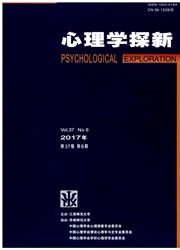

 中文摘要:
中文摘要:
对于潜变量交互效应结构方程分析,目前应用较多的是乘积指标方法.分布分析方法国内还罕有应用,包括潜调节结构方程(LMS)方法和准极大似然(QML)方法.该研究以乘积指标方法的模型假设为参照,介绍了分布分析方法的模型假设.并简要叙述了LMS方法及其Mplus程序,QML方法及其QML程序.综合现有研究结果,总结出LMS和QML方法、无约束和约束方法的特点,从中可以看出各方法的优缺点,推荐了不同条件下合适的分析方法.
 英文摘要:
英文摘要:
Despite the many approaches to estimate interaction effects between two latent variables, historically product - indicator ap- proaches have been the most influential models. The present paper discusses less commonly used approaches in China, the distribution - analytic approaches, which are specialized alternatives for the estimation of non - linear structural equation models (SEM). The distri- bution- analytic approaches include the Latent Moderated Structural Equations (LMS)approach and the Quasi -Maximum Likelihood (QML) approach. The assumptions of the distribution - analytic approaches are introduced and compared with those of the product - in- dicator approaches. The LMS approach and the related Mplus syntax, and the QML approach and QML syntax are briefed. The features of the LMS and QML approaches, and the unconstrained and constrained approaches are summarized in a table. The pros and cons of these approaches are compared and discussed with the appropriate analytical approach under different conditions being recommended.
 同期刊论文项目
同期刊论文项目
 同项目期刊论文
同项目期刊论文
 期刊信息
期刊信息
